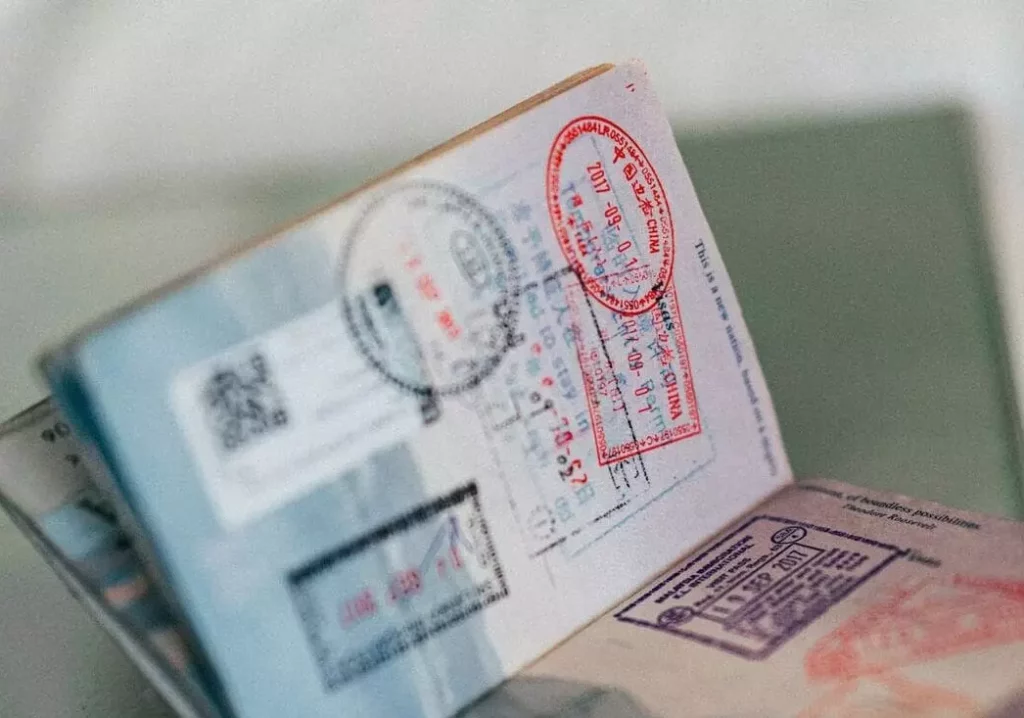In the past few years, Portugal has become a popular place to relocate for many Americans. The appeal of this country on the west coast of the Iberian Peninsula is clear: Portugal has a great climate, rolling hills, delicious food, and beautiful beaches. It also a high quality of life, often ranking highly in international living indices.
Another reason why many Americans are making this move is that Portugal also offers a more affordable lifestyle than many places in the US.
In this article, we'll compare the cost of living in Portugal vs. the cost of living in the USA. This article should give you an idea of how Americans moving to Portugal are able to save money and avoid the high cost of living in the US.
You'll also find out more about:
- Is Portugal an affordable place to live?
- How much money do I need to live on in Portugal?
- The cost of living in Portugal compared to the USA
- Living expenses in Portugal vs the USA
Is Portugal an affordable place to live?

Naturally, living in the city center of a major city such as Lisbon or Porto will be considerably more expensive than moving to one of the country's rural areas. Whether remote workers intending to rent or someone on a work visa buying a property, you'll spend more money on housing in these cities, and this will likely be your largest expense.
On the whole, though, Americans moving to Portugal from the US will find that the country is exceptionally affordable, with a low cost of living in comparison to many other countries in the European Union.
How much money do I need to live on in Portugal?
The amount you’ll need to live comfortably in Portugal depends largely on your lifestyle, location, and family size. Generally, Portugal remains one of the most affordable Western European countries, offering a high quality of life at a lower cost compared to its neighbors. According to Portuguese immigration guidelines, you must demonstrate sufficient financial means to support yourself. The benchmark is the Portuguese minimum wage, which in 2025 is €870 per month and is expected to increase to around €920 per month in 2026.
However, for a couple, it's possible to live comfortably on around €2,000 per month. If you move to Lisbon city center, for example, you'll need to budget around €2,500 per month or more. While these figures are only rough guidelines, the approximate estimates of monthly costs can be broken down as follows:
- Single person: €1,200–€1,800 (in Lisbon or Porto), €900–€1,400 (in smaller cities).
- Couple: €1,800–€2,500 in Lisbon, €1,400–€2,000 elsewhere.
- Family of four: €2,800–€3,800 in Lisbon, €2,000–€3,000 in smaller towns or rural areas.
Living Cost: Portugal vs the USA – What to Expect

Housing is where the difference is most striking. A one-bedroom apartment in central Lisbon typically costs €1,200 to €1,500, compared to $4,000 to $5,000 in Manhattan. Even in upscale areas like Cascais or Porto’s city center, rents remain less than half of comparable New York neighborhoods.
Groceries and dining are also far more affordable. A mid-range restaurant meal for two in Portugal averages €40 to €60, while the same outing in New York can easily exceed $120. Essentials such as public transport, healthcare, and utilities are likewise significantly cheaper, often by 50 percent or more.
Overall, a single person can maintain a comfortable lifestyle in Lisbon on €1,800 to €2,000 per month ($1,900–$2,100), whereas the equivalent standard of living in NYC would typically require $5,000 to $6,000 or more.
Even when factoring in Portugal’s growing rental market and inflation, it remains one of the most cost-effective and high-quality living options for Americans seeking a European base. If you're looking to find a job Portugal, it's worth bearing in mind that the average monthly salary in Portugal is lower than the average monthly salary in the US.
Here's a quick look at the differences between the cost of living in Lisbon and New York City using a relative exchange rate:
|
Category |
Lisbon |
New York City |
|
Rent (1-bedroom city center)
|
€1300 |
$4500 |
|
Rent (1-bedroom outside center)
|
€950 |
$3000 |
|
Utilities (electricity, heating, internet, etc.)
|
€150 |
$220 |
|
Public Transport (monthly pass)
|
€42 |
$130 |
|
Restaurant meal for two (mid-range)
|
€50 |
$120 |
|
Groceries (monthly average)
|
€250 |
$500 |
|
Private Health Insurance (monthly)
|
€80 |
$350 |
|
Gym Membership (monthly)
|
€40 |
$90 |
|
Average Monthly Salary (after tax)
|
€1600 |
$6200 |
Living Expenses in Portugal vs USA
Grocery prices
Compared to the United States, grocery shopping in Portugal is noticeably more affordable. On average, food prices in the US can be 70–90 percent higher than in Portugal, depending on the item and region.
Everyday staples such as bread, fruit, vegetables, and locally produced meats are particularly inexpensive in Portugal, thanks to the country’s strong agricultural base and shorter supply chains.
For example, a kilogram of apples costs around €1.70 ($1.80) in Portugal, compared to approximately $4.80 (€4.20) in the US. Similarly, a dozen eggs average about €2.30 in Portugal, while in the US, they typically cost $4.60 (approximately €4.00).
Bread is another staple where the difference is clear — a fresh loaf of white bread costs about €1.20 ($1.30) in Portugal, compared to roughly $3.20 (€2.80) in the US.
Locally produced items like olive oil, wine, and fresh seafood also offer exceptional value. Because Portugal is a major producer of these goods, residents enjoy high quality at a fraction of the price paid in most North American supermarkets.
Alcohol prices
In Portugal, local wines are quite affordable due to the country's rich wine tradition. While imported items may be pricier due to transportation fees, overall grocery costs are generally lower.
Mid-range wines in supermarkets cost around €3-8, and domestic beers range from €0.80 to €2.50. In restaurants, expect to pay €1.50-3 for beer and €2.50-4 for wine. Good Portuguese wine starts at about €5, with basic ruby Port around €15. Domestic beers like Sagres or Super Bock are €1-2, while spirits like Aguardente are €15-20. Imported drinks generally cost more.
In the US, alcohol prices vary by state due to differing taxes. Domestic beer typically ranges from $2 to $4, while domestically produced wine is priced between $10 and $ 20, and imports can exceed $20. Imported spirits face tariffs too, with domestic liquor costing $25-30 and imports starting at $40.
Eating out costs
Dining out in Portugal offers exceptional value for money, whether you’re enjoying a quick coffee at a local café or a full dinner at a seaside restaurant. There’s something for every budget:
- Cafés: A light lunch or snack, such as a pastel de nata (custard tart) and coffee, typically costs €2–€3.
- Traditional tascas: These family-run eateries serve authentic Portuguese dishes like Bacalhau à Brás (codfish with eggs and potatoes) for around €10–€15, often including a glass of house wine.
- Mid-range restaurants: Expect to pay €20–€40 per person for a three-course meal featuring fresh fish or regional specialties.
- Upscale dining: Fine dining experiences at Michelin-starred restaurants start at €50+ per person, still offering excellent value compared to most Western European or North American cities.
Portugal’s emphasis on fresh, locally sourced ingredients — seafood, olive oil, and regional wines — keeps both quality and affordability high. Even in Lisbon or Porto, eating out regularly remains feasible for many expats and locals alike.
On the other hand, dining prices in the US vary widely depending on the city, but overall, eating out tends to be significantly more expensive than in Portugal.
- Fast food or quick service: A sandwich and drink at a chain restaurant costs $8–$12.
- Casual diners and cafes: A burger, fries, and soft drink typically cost $15–$20.
- Mid-range restaurants: A sit-down meal with an appetizer, main course, and drink averages $30–$50 per person in most cities, higher in places like San Francisco or Boston.
- Fine dining: High-end restaurants often start around $70–$100 per person, excluding wine and service.
Overall, eating out in Portugal can cost 40–60% less than in major US cities, with notably better value for fresh seafood, wine, and traditional meals.
Transportation costs in Portugal vs USA
When it comes to transportation costs, Portugal remains fairly affordable compared to other Western European nations. Public transportation is reliable, efficient, and a reasonable cost option for both locals and foreign residents.
A single metro ticket in Lisbon costs around €1.80, while a monthly public transport pass (covering metro, bus, and tram networks) is approximately €42—making it an average monthly cost that most expats find easy to manage.
In Porto, prices are slightly lower, and intercity train travel typically starts around €10–€15 for short regional routes. Longer journeys across the country, such as Lisbon to Porto, range from €20 to €50, depending on the class and timing.
Car ownership in Portugal is less common among city residents, particularly in large cities like Lisbon or Porto, where public transport provides easy access to most destinations. However, many people living in smaller towns or the Silver Coast prefer having a car for flexibility. Petrol prices are among the highest in Western Europe, averaging around €1.80 per liter (approximately $8.20 per gallon).
Additional car costs, including tolls, insurance, and maintenance, make driving a bigger expense than relying on public transport.
Car insurance is another factor to consider. In Portugal, average prices range from €150 to €350 per year, depending on the coverage type—typically €150 for basic third-party liability and up to €350 for fully comprehensive policies. Compared with the same price coverage in the US, this is relatively modest.
United States
In the United States, transportation costs vary dramatically between other parts of the country. Major cities like New York on the east coast, Chicago, and Boston have strong public transportation systems, with fares ranging from $2.50 to $3.50 per ride.
A monthly pass can cost between $120 and $150, depending on the city. However, in other major cities and suburban or rural areas, public transport options are often limited, making car ownership a necessity for most expats and residents alike.
While fuel prices are generally lower than in Portugal—around $3.50 per gallon on average—the overall costs associated with owning a car can be much higher. Americans face high taxes, higher insurance premiums, and maintenance fees that add up quickly.
The average car insurance premium for US citizens is roughly $1,500 per year, though it can vary widely based on location, driving record, and vehicle type. Deductibles are also common, affecting the actual cost of ownership.
In addition to insurance, the equivalent new car often costs more in the US due to larger average vehicle sizes, greater depreciation, and regional price differences. While fuel may be cheaper, ongoing car costs such as maintenance, registration, and parking make car ownership a huge part of the American budget—especially in large cities where transportation costs can rival rental prices.
Healthcare costs
According to the World Health Organization, Portugal's healthcare
Funded primarily through taxation, the SNS provides universal coverage to Portuguese citizens, legal residents (temporary and permanent residency), and long-term visa holders — including many foreign residents and expats.
Many expats find that the SNS health insurance provides adequate care for most needs, but they also choose to complement it with private health insurance for quicker access and a broader choice of doctors.
The private sector is well-developed, with private facilities concentrated in large cities like Lisbon, Porto, and Coimbra. A standard GP consultation in a private clinic costs €50–€80, while a specialist visit averages €80–€120.
Private health insurance premiums range from €30 to €150 per month, depending on age and coverage. Even comprehensive plans are fairly affordable compared to US health insurance. The average monthly cost for a whole family policy rarely exceeds €250–€300, granting access to premium private facilities and shorter waiting times.
United States
In contrast, health insurance in the United States is among the most expensive in the whole world, with costs often cited as a huge part of the overall costs. There is no universal public healthcare equivalent to Portugal’s SNS health insurance. Instead, medical coverage depends on private insurance or employer-sponsored plans, which can be prohibitively expensive for many individuals.
The average annual premium for a single individual in the US exceeds $7,500, while family coverage averages $22,000 per year, according to 2024 data from the Kaiser Family Foundation. On top of that, patients face co-pays, deductibles, and out-of-pocket maximums that can add thousands more each year.
A standard doctor’s visit in the US costs between $100 and $250, while a hospital stay can range from $2,500 to $10,000 per night, depending on the facility. Even with health insurance, prescription medications are also costly, with some essential drugs costing up to 10 times more than in Portugal due to limited regulation and high taxes on certain imports.
Education costs in Portugal vs USA
Education in Portugal is widely regarded as high-quality and fairly affordable compared to other European nations and the United States. The country offers a mix of public and private sector options, allowing families to find a system that fits both their educational priorities and budget.
The public education system in Portugal is funded by the state and open to both Portuguese citizens and foreign residents with a valid residency visa.
Tuition is free through secondary school, and small administrative fees — usually under €50 per year — cover materials and registration. Public schools follow a national curriculum taught in Portuguese, making them an ideal option for families planning long-term integration.
Education in the United States is diverse but notoriously expensive, particularly at the higher levels. While public schooling is free through grade 12, the actual cost of education rises sharply when families opt for private schools or university degrees.
Private primary and secondary schools in the US typically cost $15,000 to $50,000 per year, depending on the state and institution. Elite preparatory schools and boarding schools can exceed $70,000 annually when including housing and fees — more than double the cost of most international schools in Portugal.
|
Category |
Portugal |
United States |
|
Public School (Primary–Secondary)
|
Free / €50 annual admin fees
|
Free (K–12)
|
|
International / Private School
|
€6,000–€20,000 per year
|
$15,000–$50,000 per year
|
|
Public University
|
€1,000–€2,500 per year
|
$10,000–$27,000 per year
|
|
Private University
|
€3,000–€8,000 per year
|
$38,000–$55,000 per year
|
|
Elite / Boarding School
|
€15,000–€25,000 per year
|
$50,000–$70,000+ per year
|
|
Student Loan Debt (Average)
|
Minimal
|
$37,000+
|
Housing costs in Portugal vs USA
Housing costs in Portugal remains fairly affordable compared to most of Western Europe and dramatically less expensive than the United States. While rental prices have risen in recent years — particularly in large cities such as Lisbon and Porto — life in Portugal still offers excellent value for money and a comfortable lifestyle for most expats.
In Lisbon, the average rent for a one-bedroom apartment in the city center ranges from €1,200 to €1,600 per month, while similar properties outside the center rent for €900–€1,200. A two bedroom apartment in Lisbon’s residential neighborhoods, such as Campo de Ourique or Estrela, costs around €1,700–€2,300 per month.
Smaller cities and coastal regions, including Coimbra, Braga, and the Silver Coast, offer much lower rent prices, averaging €700–€1,000 for a one-bedroom and €1,200–€1,500 for a two-bedroom. Even along the Algarve region, known for its beautiful beaches and international community, rental prices remain moderate outside peak tourist months. Buying property in Portugal are still among the lowest in Western Europe. The average property price per square meter is approximately €3,700 in Lisbon, €2,800 in Porto, and €2,000–€2,500 in secondary cities and coastal areas.
Housing in the United States is far more expensive on average and represents the biggest expense for most households. Rental prices vary widely depending on the state and city, but overall living costs associated with housing are considerably higher than in Portugal.
Home ownership in the US is also more costly due to higher property taxes, maintenance, and insurance premiums. The average property price per square meter in 2025 is approximately $6,500 in NYC, $5,000 in LA, and around $3,000 in mid-sized markets. Combined with high taxes and loan interest rates, this makes purchasing a home significantly more expensive than in Portugal.
|
Category |
Portugal |
United States |
|
One-Bedroom Apartment (City Center)
|
€1,200–€1,600 |
$3,000–$4,500 |
|
One-Bedroom Apartment (Outside Center)
|
€900–€1,200 |
$1,800–$2,500 |
|
Two-Bedroom Apartment (City Center)
|
€1,700–€2,300 |
$5,000–$7,000 |
|
Two-Bedroom Apartment (Outside Center)
|
€1,200–€1,500 |
$2,800–$3,500 |
|
Property Price per m² (City Center)
|
€2,000–€3,700 |
$3,000–$6,500 |
|
Property Price per m² (Outside Center)
|
€1,200–€2,500 |
$1,800–$3,000 |
Utility expenses

The average monthly cost for electricity, water, air conditioning, and garbage collection in a two-bedroom apartment ranges between €100 and €150, depending on usage. Smaller homes or apartments in the city center, particularly in Lisbon or Porto, may spend closer to €120, while larger suburban houses or homes with a swimming pool can see bills rise to €180 or more.
Internet and mobile services are competitively priced. A high-speed broadband connection with unlimited data typically costs around €35–€45 per month, while mobile phone plans average €15–€25, including generous data allowances.
For daily household needs, cleaning products, toiletries, and personal care items are inexpensive, with the monthly budget for these essentials averaging €20–€30 per household. Altogether, the utility costs in Portugal contribute modestly to the overall living costs, allowing most expats to maintain a comfortable lifestyle even in urban areas.
In the United States, utility costs are generally higher due to larger home sizes, more extreme weather conditions, and greater reliance on heating and cooling systems. The average monthly cost for electricity, water, garbage collection, and heating in a standard apartment ranges from $250 to $400, while detached family homes often exceed $500 during peak seasons.
Electricity rates average about $0.16 per kWh, but the typical US household consumes nearly three times as much power as a comparable Portuguese home. Water services also vary widely by region, costing anywhere from $30 to $100 per month, while garbage collection fees typically add $25–$50.
Internet and mobile services are among the most expensive in the developed world. High-speed broadband averages $70–$100 per month, and mobile plans can cost $60–$120, especially for families with multiple lines.
|
Category |
Portugal |
United States |
|
Electricity, Water, Heating, Garbage
|
€100–€150/month
|
$250–$400/month
|
|
Electricity Price (per kWh)
|
€0.24
|
$0.16
|
|
Water Services
|
€1.50–€2.00/m³
|
$30–$100/month
|
|
Internet (High-Speed)
|
€35–€45/month
|
$70–$100/month
|
|
Mobile Phone Plan
|
€15–€25/month
|
$60–$120/month
|
|
Seasonal Variation
|
Higher in winter months
|
Higher in summer and winter
|
|
Household Essentials (Cleaning Products, etc.)
|
€20–€30/month
|
$40–$60/month
|
Frequently Asked Questions about the cost of living in Portugal vs USA
Is it cheaper to live in Portugal or the USA?
When comparing the cost of living in Portugal and in the USA, it largely depends on various factors such as location, lifestyle, and individual preferences. Generally, Portugal tends to offer a lower cost of living in terms of housing, healthcare, and everyday expenses, making it an appealing option for those seeking affordability without sacrificing quality of life.
How much does it cost to live in Portugal?
The cost of living in Portugal can vary depending on factors such as location, lifestyle choices, and individual preferences. On average, expenses typically include rent or mortgage payments, utilities, groceries, transportation, healthcare, and leisure activities. While Portugal generally offers a more affordable cost of living compared to many other Western European countries, specific costs can vary widely depending on where you choose to live and your personal spending habits.
How expensive is Portugal compared to other Western European countries?
Portugal generally has the lowest cost of living compared to many other countries in Western Europe countries. While expenses can vary depending on factors such as location and lifestyle, Portugal typically offers more affordable housing, dining, and leisure options. However, certain areas like Lisbon and Porto may have higher living costs akin to other European capitals.
How does the cost of living in Portugal's major cities compare with major cities in the US?
While the cost of living in Portugal is generally lower than in the US, certain cities like Lisbon and Porto may have comparable expenses to major US cities, especially in terms of housing and dining. Factors such as location within each city, lifestyle choices, and individual preferences play crucial roles in determining the overall cost of living comparison.
What are the estimated monthly costs of living in Portugal, and how do they compare to countries in Western Europe?
The estimated monthly costs of living in Portugal vary depending on factors such as location, lifestyle, and housing preferences. Generally, expenses encompass rent or mortgage payments, utilities, groceries, transportation, healthcare, and leisure activities.
These costs can differ significantly between urban and rural areas, as well as between regions within the country. Comparatively, Portugal's cost of living tends to be lower than in many other European countries, making it an attractive option for expatriates and retirees seeking a high quality of life at a relatively affordable price.
Can you live in Portugal for $1,000 a month?
Living in Portugal on a budget of $1,000 a month is possible, but it largely depends on your lifestyle, location, and spending habits. In less expensive areas or smaller towns, it may be feasible to cover basic expenses such as rent, groceries, utilities, and transportation within this budget. However, in larger cities like Lisbon or Porto, where housing costs are higher, $1,000 a month may not be enough to comfortably cover all expenses, especially in the city center. Additionally, factors like dining out, entertainment, and healthcare costs can further impact your overall budget.
How much does it cost to live in Portugal as a single person?
A very frugal lifestyle in smaller towns may require a monthly budget of around €700 to €800, excluding rent. For a more comfortable living, which includes occasional dining out and leisure activities, you might expect to spend between €1,200 and €1,500 per month, excluding rent, especially in cities like Porto or Lisbon. If you aim for a high standard of living in central Lisbon, with frequent dining out and entertainment, your monthly cost of living could exceed €2,000, not including rent.
How much does it cost for a family of four to live in Portugal?
For a family of four, estimated monthly costs range from €2,000-€3,500 depending on lifestyle and location. Monthly expenses for a family of four without rent would be around €1,300-€2,500. This would cover groceries, utilities, transportation, and basic needs.








